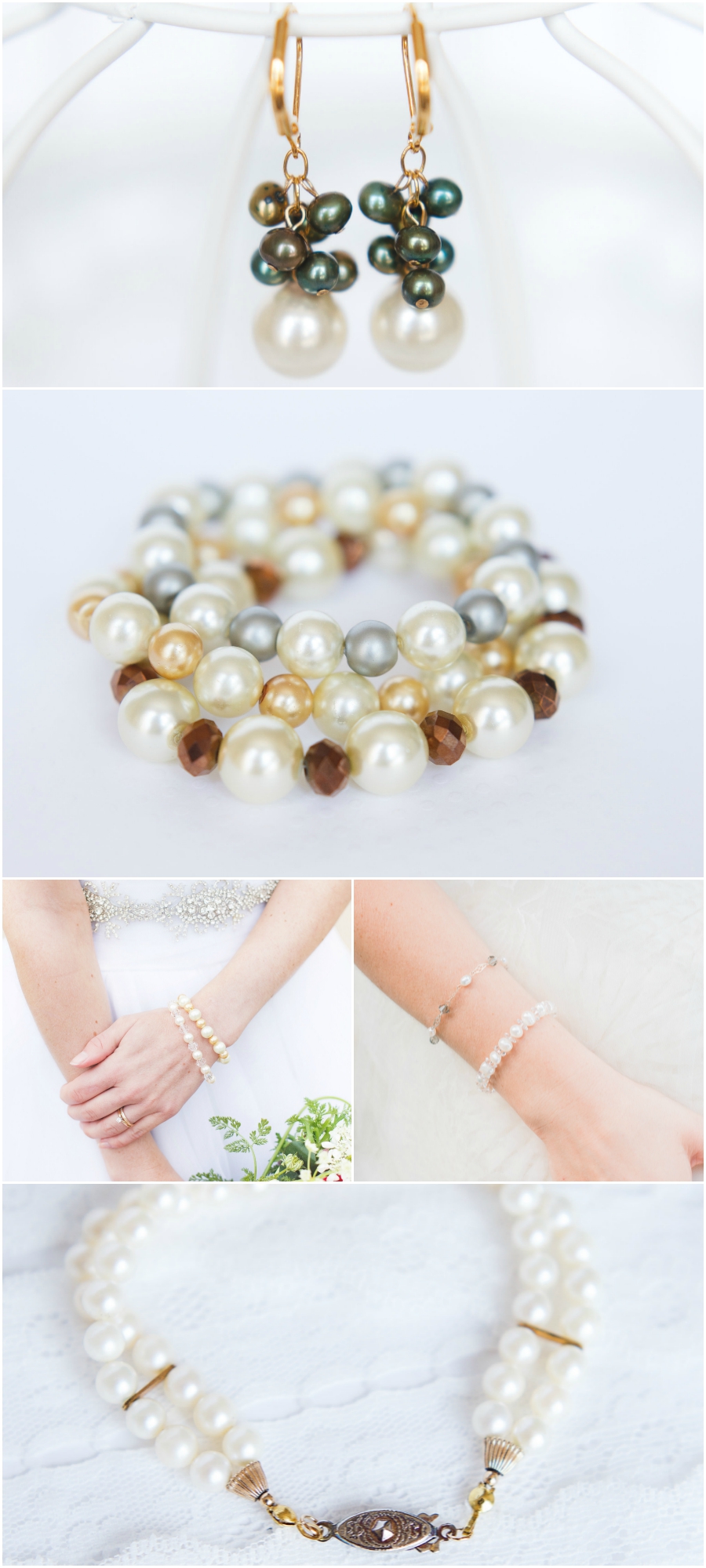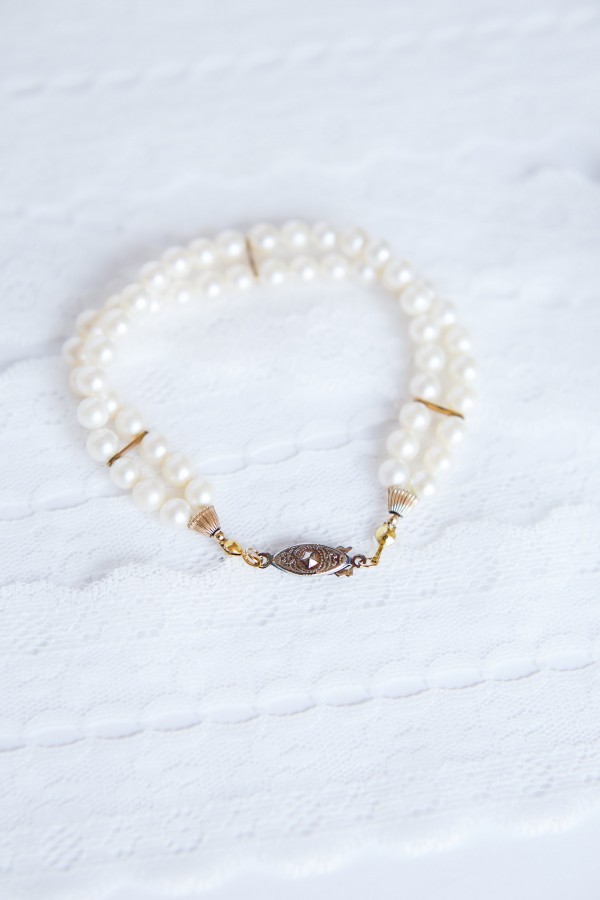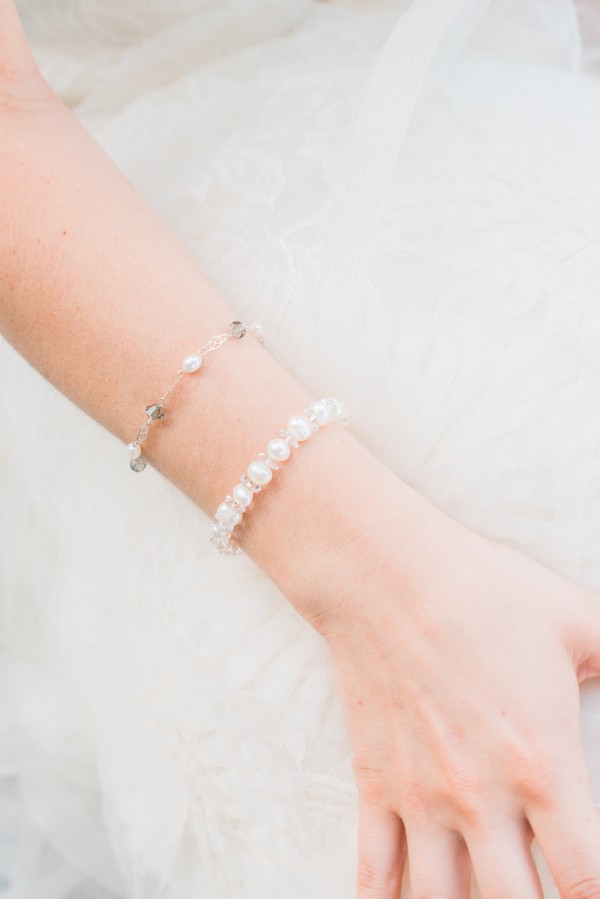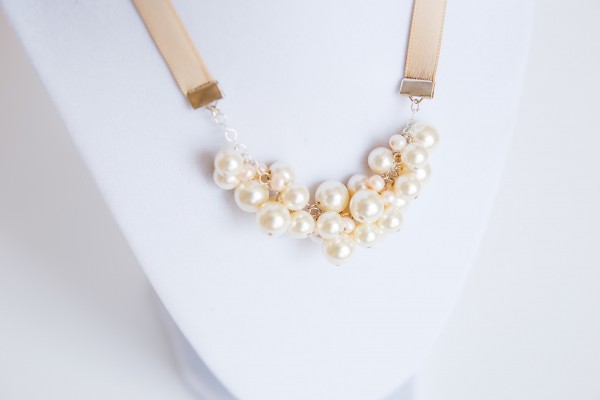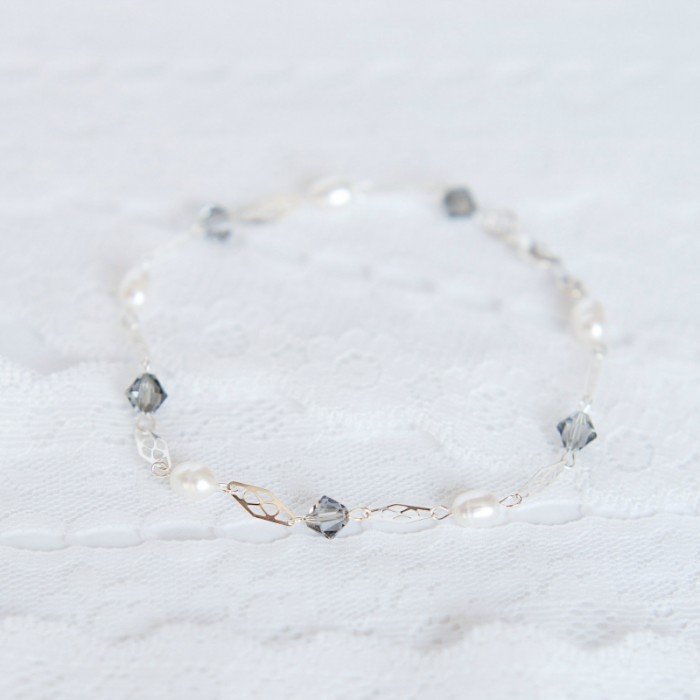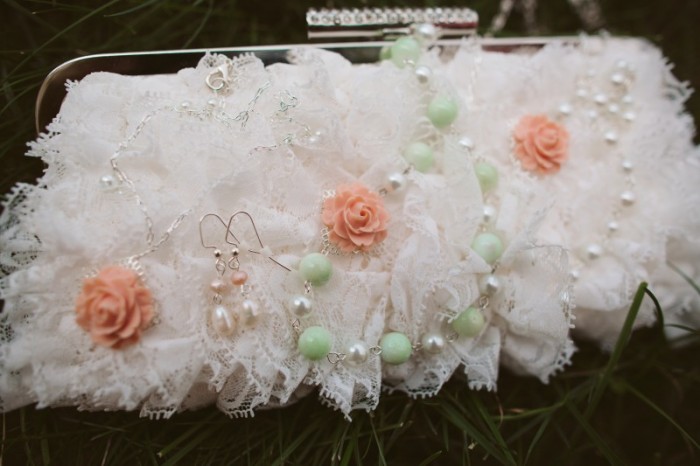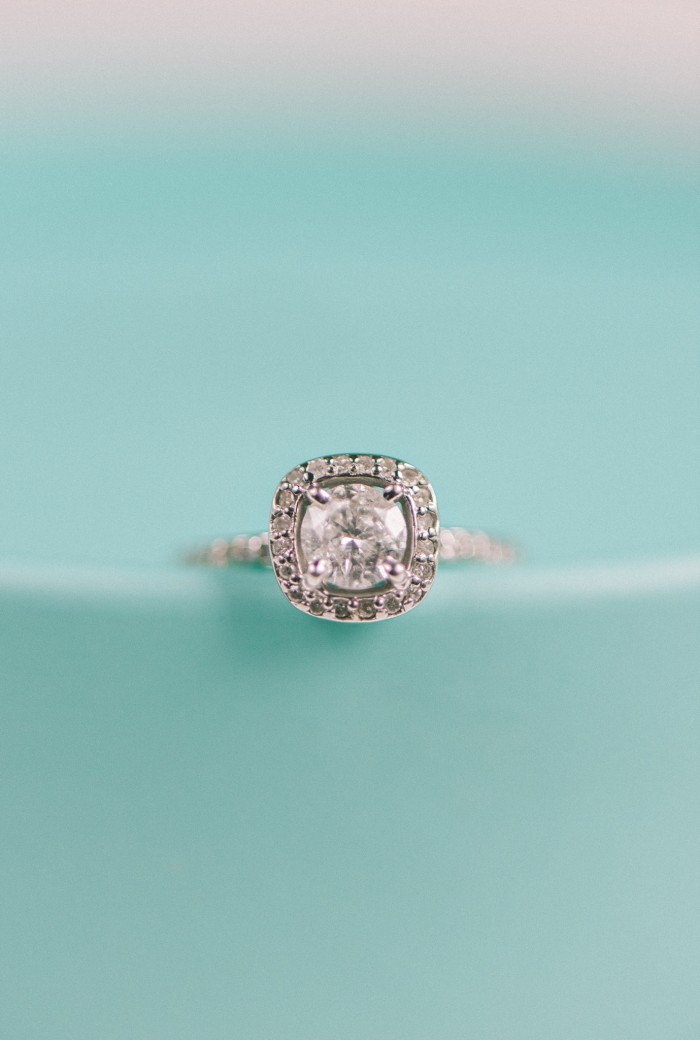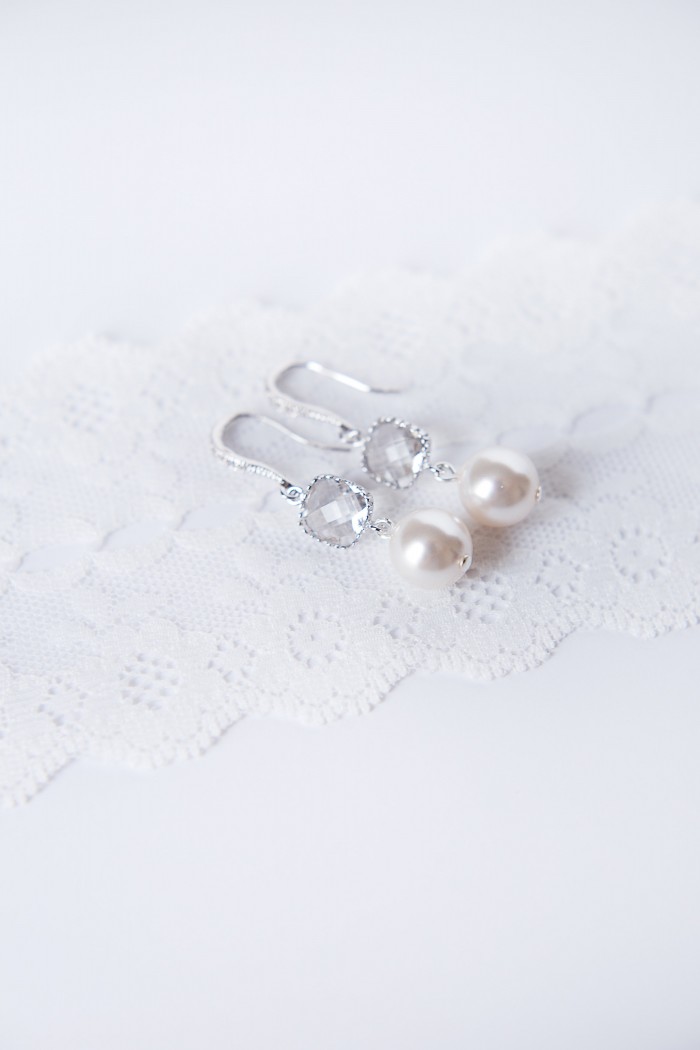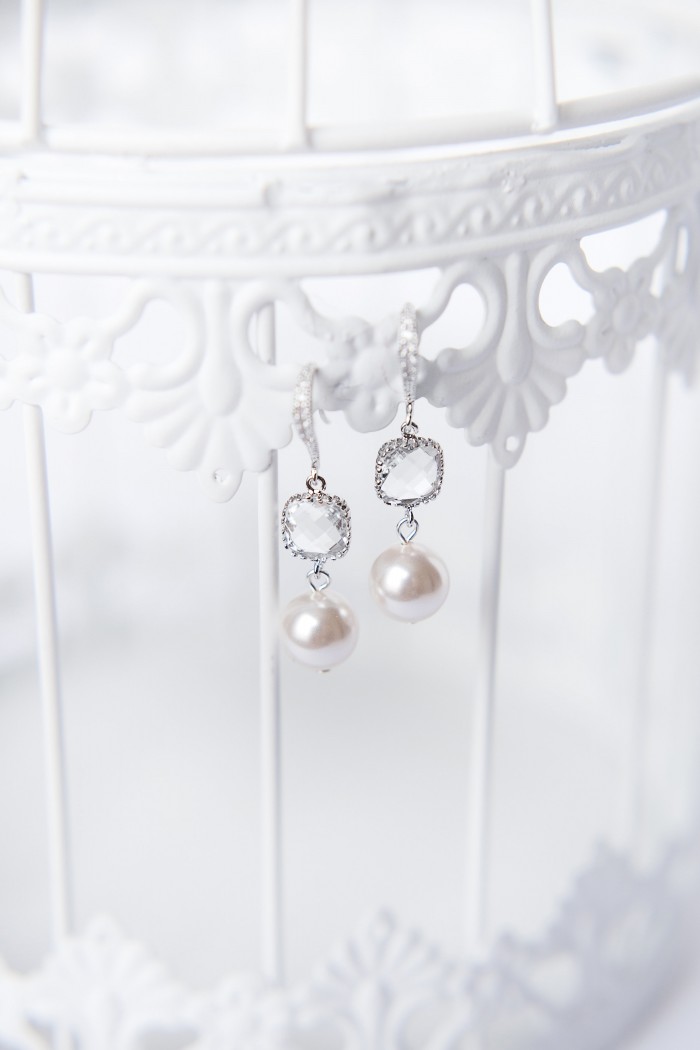Today’s “Know Your Bling” post focuses on one of our most beloved materials to work with for our bridal jewelry – Pearls! There are so many varieties and quality levels, and we’ve tried nearly all of them. In this blog post we’ll take a close look at three types of pearls you should know about. Read on to learn what kinds are available, how they’re made, and which ones we love the best!
Natural and Cultured Pearls
We all know the symbolic story of how pearls are created, used to inspire perseverance through life’s hardships: Pearls are made when an irritant gets inside the shell of a mollusk, which produces layers of luminous nacre around it. In natural pearls, this occurs spontaneously without human intervention. Historically, they were found in the Persian Gulf but today they have been almost entirely harvested, making them very rare.
Cultured pearls occur when an irritant (usually a mother-of-pearl bead or piece of tissue) is surgically inserted in a controlled environment for the purpose of producing a pearl. Both natural and cultured pearls may be created in saltwater or freshwater. The quality grade of these pearls is determined by the evenness and luster of the nacre layers comprising the pearl.
Freshwater Pearls
Another variety of cultured pearl, freshwater pearls are created in the environment indicated by their name, often in lakes and rivers in China. The process by which they are grown is similar to those of their saltwater counterparts, but they differ in that they rarely have a bead nucleus – instead, only a piece of tissue. The resulting pearl has a thicker nacre, creating more variety in texture and shape. This is the type of cultured pearls that we typically use in our designs, often in combination with Swarovski pearls and crystals.
Swarovski & Other Synthetic Pearls
In the crafting community, synthetic pearls (often made of glass) have become popular due to their affordability, widespread availability in stores such as Michael’s and JoAnn’s, and great variety of colors. Glass pearls are created by applying a pearlescent coating over top of a glass bead.
We have worked with glass pearls in past bridal and custom jewelry orders, but found them to be lower in quality than what we strive to offer our customers. The outer coating, often rather thin, can chip and scratch easily, and the weight of these pearls is much lighter than that of their natural counterparts, giving jewelry pieces a lighter, more costume-like feel.

Fortunately, we’ve been able to find a great alternative in Swarovski pearls! These pearls have a Swarovski crystal core, giving them a feel that warms to the skin and is a bit heavier, mimicking authentic pearls more closely. The outer coating is much more similar to that of a natural pearl with a thicker and more consistent quality that looks luxurious and holds up better to wear and tear. They come in a variety of colors, shapes, and sizes, making them an ideal option for our custom clients trying to match their wedding colors.
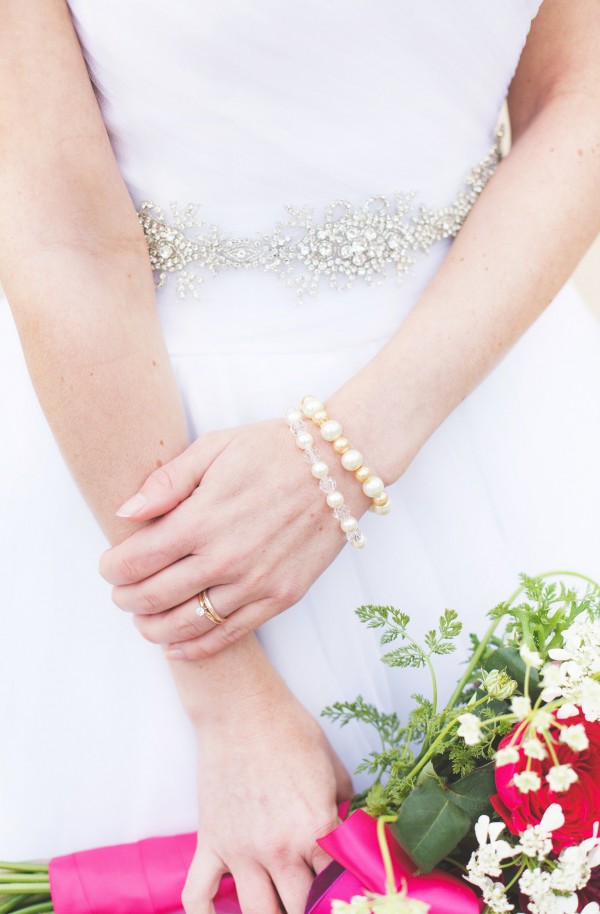 Natural, cultured, or synthetic, pearls offer a classic elegance to jewelry pieces with a versatility that’s hard to match. Look for more pearl bridal jewelry in our upcoming 2016 Bridal Collection, set to launch this October!
Natural, cultured, or synthetic, pearls offer a classic elegance to jewelry pieces with a versatility that’s hard to match. Look for more pearl bridal jewelry in our upcoming 2016 Bridal Collection, set to launch this October!
Featured jewelry:
Image 1: Pearl stretch bracelets in Romance and Grey
Image 2: Double stranded vintage pearl bracelet
Image 3: Grey crystal/freshwater pearl bracelet; Freshwater pearl and thin crystal bracelet (Both coming soon!)
Image 4: Champagne ribbon tieback necklace
Image 5: Green freshwater & Ivory Swarovski pearl earrings
Image 6: Pearl stretch bracelet in Romance; Ivory & Crystal bracelet (Coming soon!)

